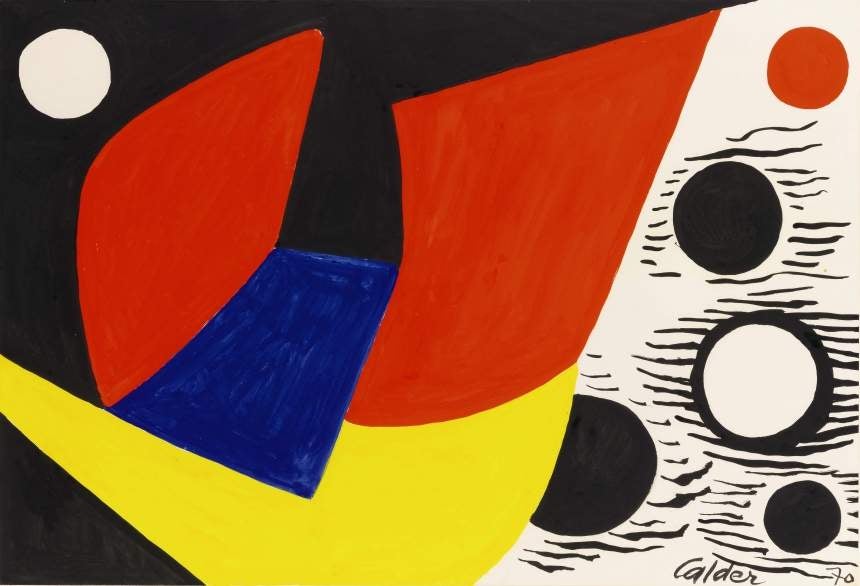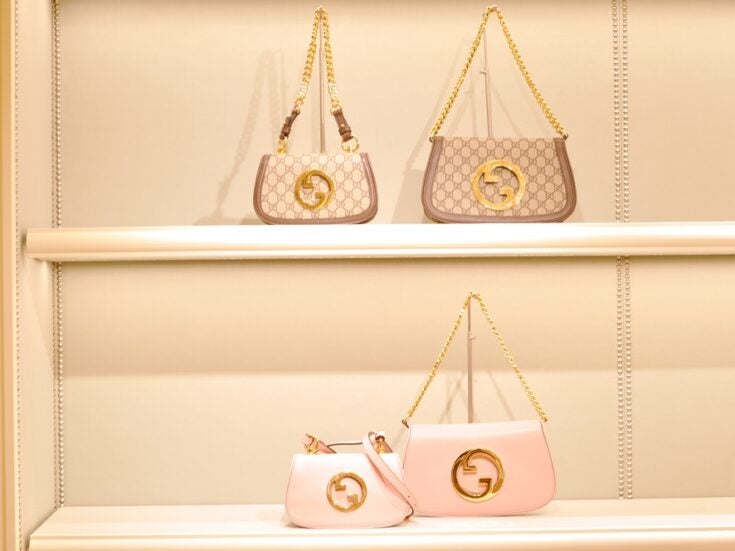
Two major London shows reveal the extraordinary talent of American artist Alexander Calder. The man behind both, with a little help from Saatchi Gallery, is the Mayfair art dealer Omer Tiroche, writes Harry Dougall
When the Saatchi Gallery approached him about collaborating on an exhibition, the Mayfair art dealer Omer Tiroche didn’t think twice about the artist he wanted to show.
Since childhood he’d been surrounded by Calder works – his father, Micky, being a collector and dealer who had been acquiring his works since the 1980s, and Omer was lucky enough to have one hanging on the wall of his bedroom when he was a child.
Less obvious was the decision to focus on Calder’s paintings, gouache works executed on paper to be precise, rather than his famous mobile sculptures, though there is one of those in the show.

Entitled Calder on Paper: 1960 – 1976, the Saatchi presentation is quite wonderful. It is being staged at SALON, a new innovation of the gallery’s Senior Director Philippa Adams. Uniquely, SALON offers commercial galleries the opportunity to stage selling shows in a major museum space. Calder is a perfect fit, in that it is both accessible and scholarly.
Despite being most widely celebrated for his mobiles (also known as ‘drawings in space’), the American artist actually began his career as a painter, developing his gouache technique in the 1930s while living in Paris. He preferred working with gouache over oil paint and watercolour because it dries more quickly, and for the medium’s opacity of colour.
Highly regarded for their immediacy and purity of colour, line and form, the gouaches incorporate aspects from his mobiles, and it’s fascinating to witness how these two elements of his practice fed off one another.
To further illuminate this, Omer Tiroche is staging a companion show at his Mayfair gallery, Calder on Paper: 1939-1959. The lion’s share of works for both shows come from the Tiroche family’s private collection. When Tiroche’s father started acquiring Calder’s gouaches they were around $10,000. It has proved a very wise investment. Now they sell for upwards of $200,000, an impressive increment event by the heady standards of Contemporary Art.
Tiroche claims this can part be attributed to his father’s ‘brilliantly forward-thinking eye’, and making a connection between Joan Miró (1893 – 1983) and Calder. He continues, ‘He recognised that Miro and Calder had been close, in both friendship and practices, and it didn’t make sense that Miro’s prices were so much higher than Calder’s.’
‘My father began buying these works on paper during one of the art market’s most inflated periods,’ he adds, ‘and then continued acquiring them throughout the crash of the early 1990s and beyond. With his support, and thanks to the creation of the Calder Foundation, which provided a reputable platform for authentication and organisation, prices began to rise steadily around the mid-2000s, and dramatically so from about 2012.’
Art is very much the family business. Omer’s father founded the Tiroche Auction House in Israel, and a few years later moved to London where he has been operating as a private dealer in London since 1996. Omer’s uncle, Serge, is a key player in the growing emerging art fund industry, and co-founder of the Tiroche DeLeon Collection.
Tiroche, considered one of London’s most exciting young dealers, certainly appears to have inherited his father’s eye, and for those hoping to spot the next trend he is happy to share the following advice:
‘There are other artists whose markets I’m tracking very closely and making sure to purchase as many works as I can, namely some of the artists who were associated with the European Art Informel movement of the 1950s and 60s. These artists are so important and influential for 20th century art history, and many are so undervalued.’
You heard it here first.
Calder on Paper: 1960-1976 will be at the Saatchi Gallery until 7 December
Calder on Paper: 1939-1959 is at Omer Tiroche Gallery, 21 Conduit Street, London W1S 2XP, until 8 December
Photos courtesy of Omer Tiroche gallery
Related
Meet Damian Elwes, the art world’s inside man
Discovering the portraits of Oswald Birley






